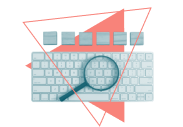How Prediction Markets Are Reshaping the Crypto Forecast Game
Key Points
In the crypto forecast game, prediction markets use financial incentives to crowdsource future outcomes—often more accurately than expert forecasts or polls
Platforms like Polymarket and Augur offer decentralized, transparent ways to gauge crypto trends, from Ethereum to Zephyr.
Zephyr prediction markets help traders, builders, and investors make smarter decisions based on live community sentiment.
With digital economy evolution, so goes the process of forecasting the future.
The conventional prediction type—whether based on experts, polls, or technical indicators—has been challenged by a powerful, crowd-driven alternative in the form of prediction markets, especially within the fast-evolving landscape of crypto forecast.
These markets have grown to prominence in almost every industry.
The real potential applications serve cases in cryptocurrencies, wherein the events are defined by volatility, speculation, and innovation—the markets assign a thorough quantification of sentiment for the anticipated event.
Perhaps one of the most exciting applications is for early-stage projects like Zephyr, captivating traders and analysts in the evaluation of future potential in the long term through Zephyr future predictions.
What Are Prediction Markets?
Prediction markets are like the stock exchanges of the crypto forecast world, where users buy and sell shares in events they believe will (or won’t) happen.
✅The event is put forth as a question:
Will Bitcoin pass $100,000 in 2025? – and owners of shares can wager yes or no by buying shares that lie between $0 and $1.
Yes, shares will be paid $1 if the event indeed takes place, while they expire worthless in case it does not.
The price of the market represents an aggregate of the perceived probabilities of the crowd.
If, again, “yes” is being traded at $0.65, the market is asserting that there’s a 65% probability for the event to occur.
Unlike polls or expert forecasts, prediction markets put financial remuneration on being right, thus encouraging participants to make rational and best-informed bets.
Why Do Prediction Markets Work So Well?
Prediction markets profit from the wisdom of the crowd—the belief that collective judgment, when at stake of monetization, is more worthwhile and accurate than individual forecasts. Their key advantages include
- Financial Incentives: Traders are motivated to bet only when they are confident.
- Real-Time Adaptability: Prices change as a new piece of information arrives to update their price constantly.
- Transparency: Outcomes and odds are visible for everybody in the market, not locked in proprietary models.
- Decentralization: In blockchain-backed platforms, a central agency cannot interfere with the markets or payouts.
This decentralized and merit-based structure is perfect for domains such as cryptocurrency, where outcomes are difficult to forecast and investor behavior can often be highly reactive.
The Rising Force of Blockchain-Based Prediction Platforms
Blockchain applications have put prediction markets into yet another level of evolution.
Smart contracts ensure that trading and settlement are automated, trustless, and tamper-proof.
Users are provided with the liberty to trade anonymously, create their markets, and participate from any part of the globe.
Some of the leading platforms include
- Polymarket: An easy-to-understand UI for the most fluid markets in politics, finance, and crypto.
- Augur: The first decentralized prediction system running on Ethereum smart contracts.
- Gnosis: Integration into broader DeFi ecosystems and DAOs for governance and strategic forecasting.
These platforms are increasingly being harnessed for market intelligence, even from the perspective of researchers, hedge funds, and corporations.
Prediction Markets in the Crypto Area
Forecasts are the very heart of making decisions in the trade of cryptocurrencies.
Traders look to find whether a bull market will come or not. Developers try to understand adoption trends, while some VCs want to predict which tokens are set to break at the next moment.
The prediction markets help all of these by presenting real-time, crowd-sourced probabilities on burning questions like
Will Ethereum morph into a shard-based architecture by 2026?
Will Solana top Ethereum regarding daily transaction count?
Will Dogecoin enter back into the top 10 by market cap?
These questions are anything but theoretical since they’ll impact trading strategies, community planning, and capital deployment.
Zephyr and the Power of Community Forecasting.
Among the agents of new attention, Zephyr stands out in front of provisional utility, particularly in DeFi and community governance.
Because Zephyr is a relatively young protocol, it does not yet have the deep trading history or mass media presence that more established coins have.
This in itself makes the modeling of Zephyr with traditional financial tools more difficult, but in itself makes prediction markets a perfect fit.
Through these markets, speculators bet on crucial milestones such as:
Will Zephyr reach $1 billion in market capitalization by 2026?
Will Zephyr be listed on a Tier 1 exchange within 12 months?
Will Zephyr implement AI-based risk management tools before 2025?
The group’s wagers on these kinds of questions represent the core of Zephyr’s future predictions, providing both subtle and real-time insights into investor and user perceptions of project viability.
Why This Matters for Traders and Builders
For traders, these markets offer an entirely new form of sentiment analysis. X (Twitter) polls or opinions of YouTube influencers may be subjective, but financial risk backs these odds, providing a more objective view of crowd belief.
For builders and developers, the prediction markets can serve as live user feedback. Want to know if the community will embrace your next feature launch?
Create a market. The results will reflect if your users believe in your roadmap and provide an opportunity to pivot before committing capital or development time.
For investors, the markets might provide an early signal of breakout candidates.
A viable indicator in the crypto forecast game is when the majority market believes the adoption metrics of an almost unknown token will be realized—often making it a worthwhile consideration.
Limitations and Challenges
Nonetheless, prediction markets have their problems. Here are some key obstacles associated with prediction markets:
- Liquidity constraints: Many of the markets now are small and thinly traded, which makes them pretty easy to manipulate.
- Regulatory ambiguity: In some jurisdictions, they are even considered gambling or derivatives.
- Ambiguous design of the markets: Inappropriately phrased questions may result in disputes or unfair conclusions.
- Barriers to adoption: DeFi-based markets may be inaccessible or incomprehensible to a non-crypto native.
Yet, these issues are being slowly addressed with better UX, frameworks for dispute resolution, and more extensive educational efforts.
Onward to the Future of Prediction Markets
Looking ahead, it could weave into both the fabric of the crypto economy and mainstream finance. Some evolutions that can happen are
Mobile-native prediction apps
- Integration with crypto dashboards like Dune or TradingView;
- Bridging with AI tools for enhancing signals from raw data;
- Use by hedge funds and analytics firms on an institutional level;
With their gradual development as they mature, they will be inclined more and more, from being a novelty to being a necessity.
Crypto Forecast: Conclusion
Prediction markets have been revolutionizing the view on predicting things.
In the turbulent weather of crypto, wherein tomorrow’s headline can be today’s price, having a decentralized and financially incentivized platform to actually gauge belief is priceless.
Projects including Zephyr show how far this can go.
Enabling access to Zephyr’s future predictions offers novices and optimists alike a new way of examining opportunity, risk, and momentum.
Be it building, investing, or simply speculating, prediction markets are as much about betting as they are about knowing what the future holds even before it comes.




















